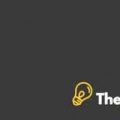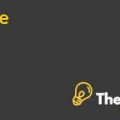Deborah Jamieson and the University College London Hospitals: Case Study Solution
Introduction
Deborah Jamieson, an advanced practitioner at the university college London Hospital (UCLH) National Health Service (NHS) Trust, knew that implementing pre-operative assessment across the trust was a huge undertaking, but one that was necessary to improve patient care, reduce cancelations& boost efficiency and utilization (D'Aunno Thomas, 2006). Several pre-assessment centers opened in a short period, & a day surgery clinic improved. Deborah was also altering the opinions of many trusts’ important players such as managers, consultants etc., some of whom had been skeptical of the nurse run clinics at first.
In addition, the staff was more motivated & patient satisfaction had improved. There was still a lot of works to be done, more improvements, additional nurse training & expanding the number of clinics within the trust all required additional funding.
Deborah, an American national, was hired in Feb 2002 to establish a nurse-led preoperative assessment service and to review the existing day surgery clinic at the university college London hospital NHS trust. Doctors have always run pre-admission clinics. Her first task was to find a nurse who will take on additional responsibilities. She also had to persuade the key actors that nurse-run pre-admission centers would be beneficial to both patients and staff. She recognized that, in the long term, these clinics would free up more time for consultants, reduce canceled surgeries, and so lower costs and improve patient care, based on her previous experience in the United States. “I want to have one major pre-assessment center with enough skilled staff, nurse practitioners, and consulting rooms, as well as specialized anesthesia sessions,” she says.
The National Health Service (NHS) was founded in 1948, following the Second World War. Its goal was to unite all healthcare providers to patients onto a single platform, the NHS. As time went on, the NHS struggled to meet the demands of healthcare professionals, causing individuals who needed treatment to wait longer. Following the party’s re-entry in 1997, it vowed to lead the organization out of its financial difficulties. Because there were roughly eight specialist hospitals working to launch a new hospital entitled University College Hospital, a star rating system was introduced to grade the services offered by the University College London Hospital NHS Trust. The goal of the UCLH was to provide a decent educational level for the students who studied there, as well as excellent patient care through their high-profiled services and outstanding research. It was successful in offering excellent services to its patients, but it had a complicated protocol that people had to follow in order to receive treatment for their medical problems. Deborah was hired as an Advanced Practitioner by the University College London Hospital in 2002.
Problem Statement
Deborah, an Advanced Practitioner at the University College London Hospital NHS Trust, was hired to establish nurse-led pre-admission clinics and to strengthen the Trust’s existing day surgery clinics. The case explains how she recruits and trains nurses to manage these clinics. She uses her US expertise to motivate nurses to take on additional clinical responsibility. The case looks at how nurses’ jobs are developing in the NHS as they take on more responsibilities that were formerly handled by doctors and consultants (attending physicians). Jamieson’s approach to changing key actors’ mindsets (managers, consultants, and anesthetists), as well as how she conducts pre-assessment clinics and enhances the existing day surgery pre-admission process, is described in the case. Patient satisfaction is higher, and fewer operations are canceled, which lowers the Trust’s expenditures.
Situation Analysis
Q1: Deborah’s Effective Leadership at UCLH
Deborah noticed that the organization was working well after she started as an Advanced Practitioner at the University College London Hospital, but that the services it provided were going through a complex procedure with many unnecessary steps. Because the doctor was unaware of the patient’s condition, surgeries were also canceled.
Deborah considered redesigning the map of services provided to patients because the current procedure entails 56 steps, which is excessive for assessing a patient’s medical condition and preparing them for admission. The hospital’s service delivery was significantly redesigned into a two-step procedure, which proved to be a game-changing change.
As a result, the pre-admission clinic for patients has been redesigned successfully. For assessing the patient’s medical condition, it was divided into a two-step assessment procedure. The first step was to figure out what the patients’ needs were, which included social, medical, and educational requirements. While the patient’s care entailed the provision of services that the patient required, such as diagnostic services, physiotherapy, and a variety of other services, as dictated by the patient’s medical condition.....-
Deborah Jamieson and the University College London Hospitals Case Study Solution
This is just a sample partial case solution. Please place the order on the website to order your own originally done case solution.













